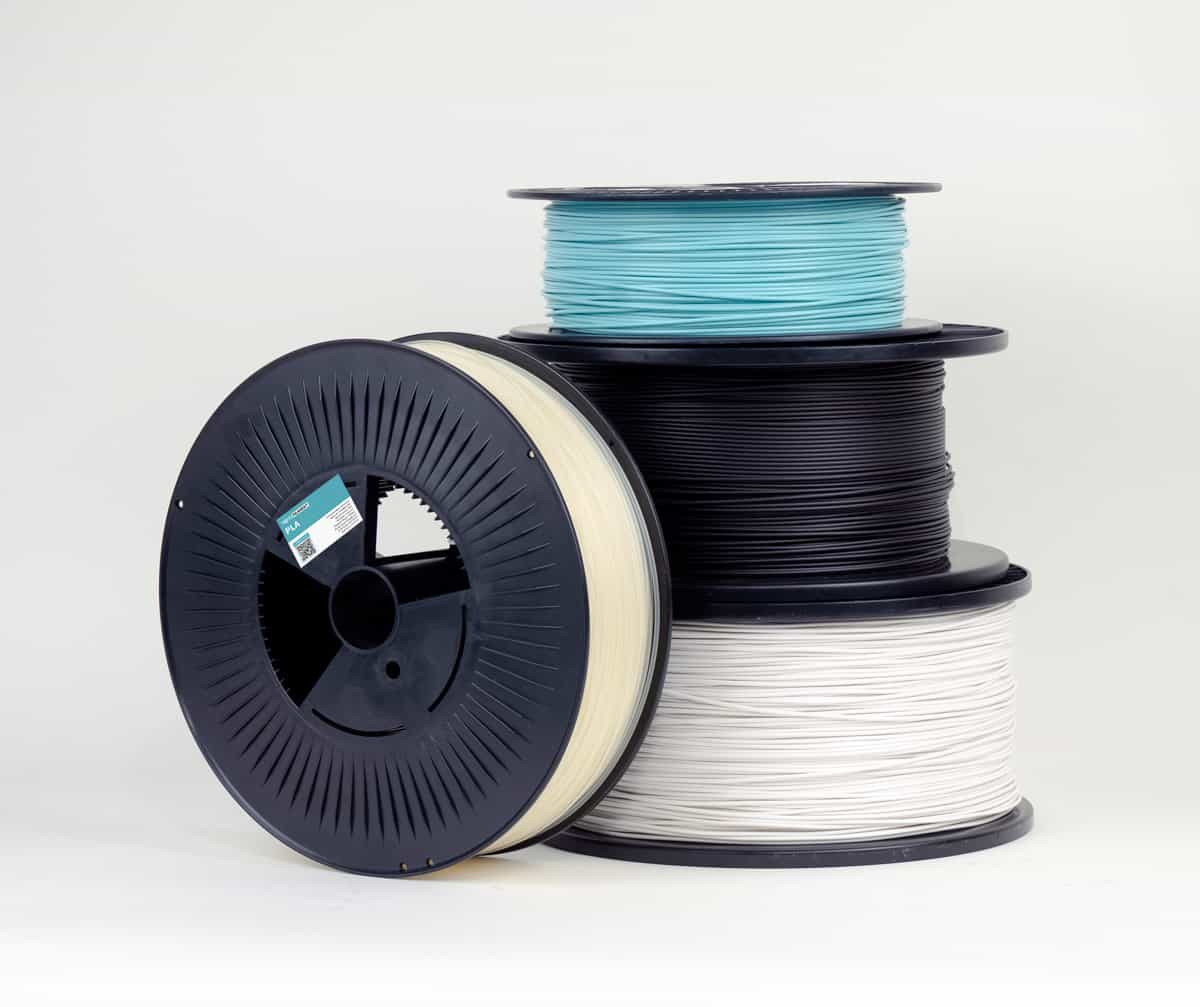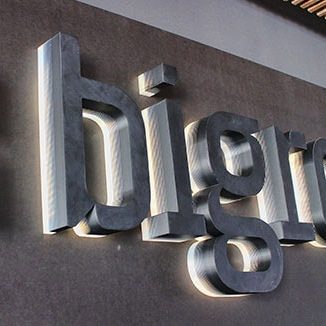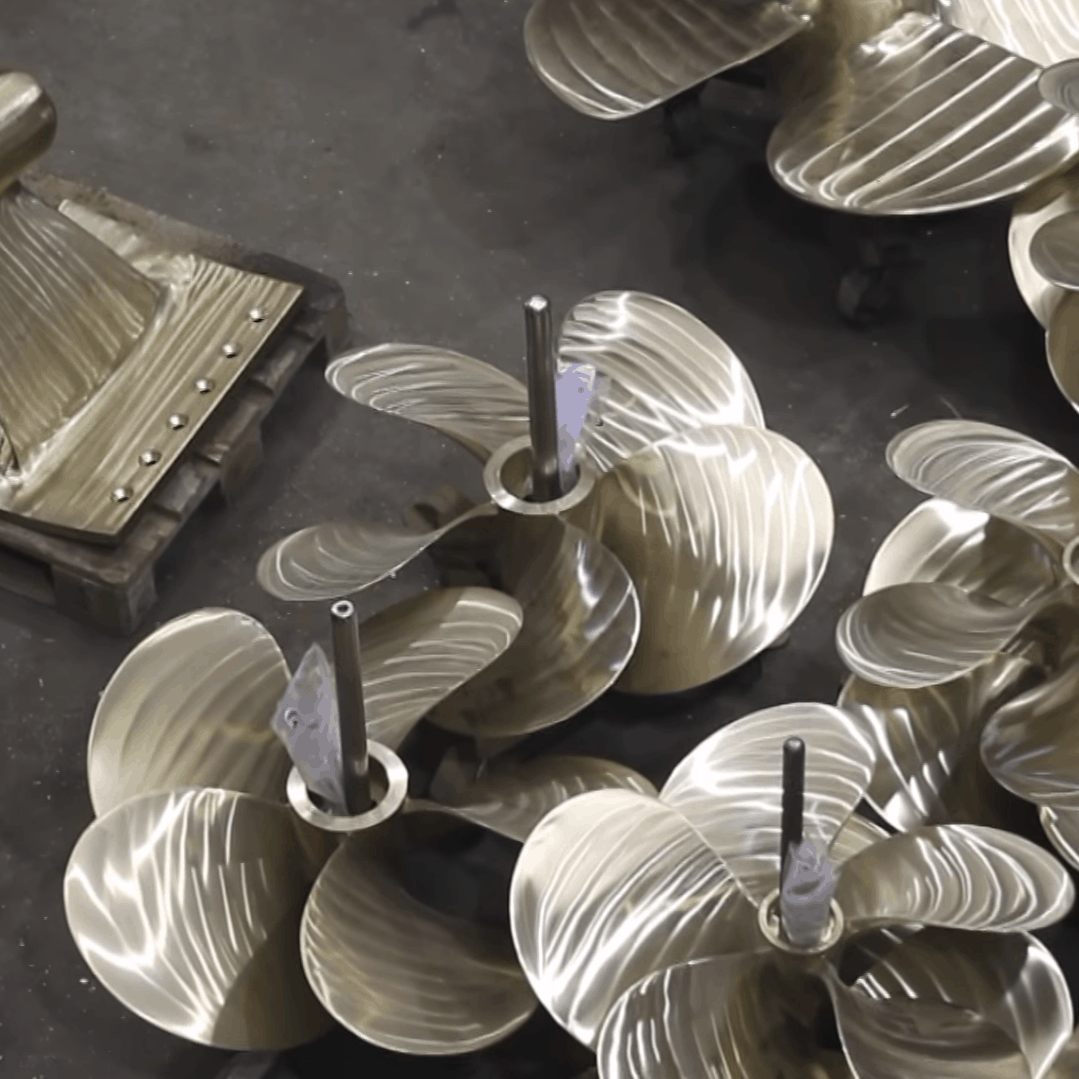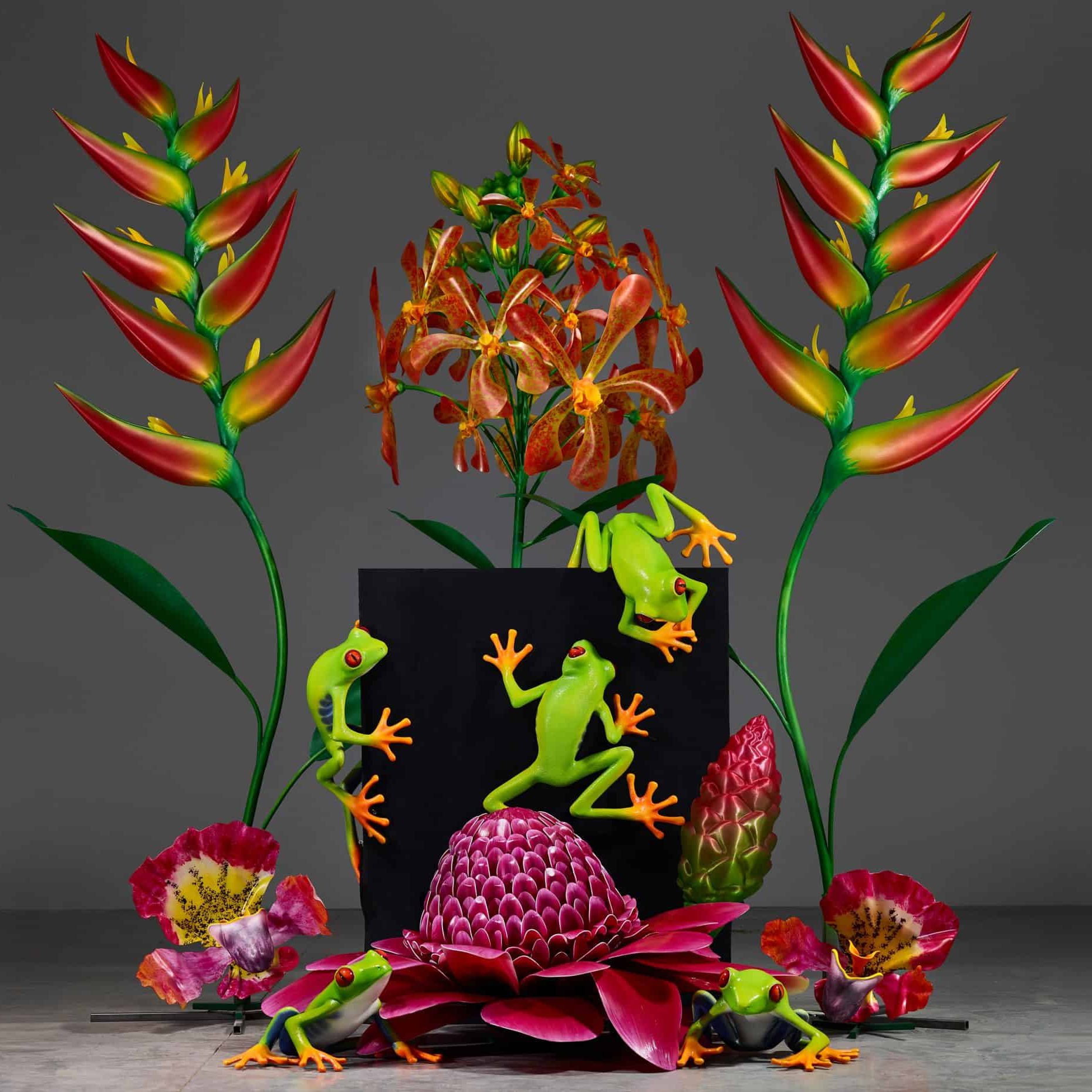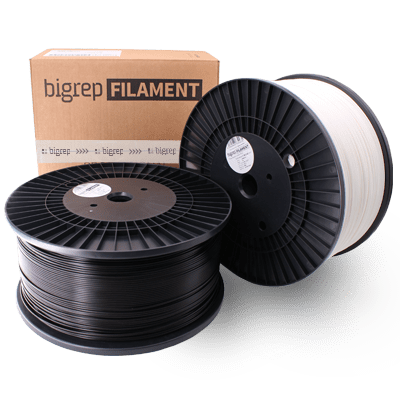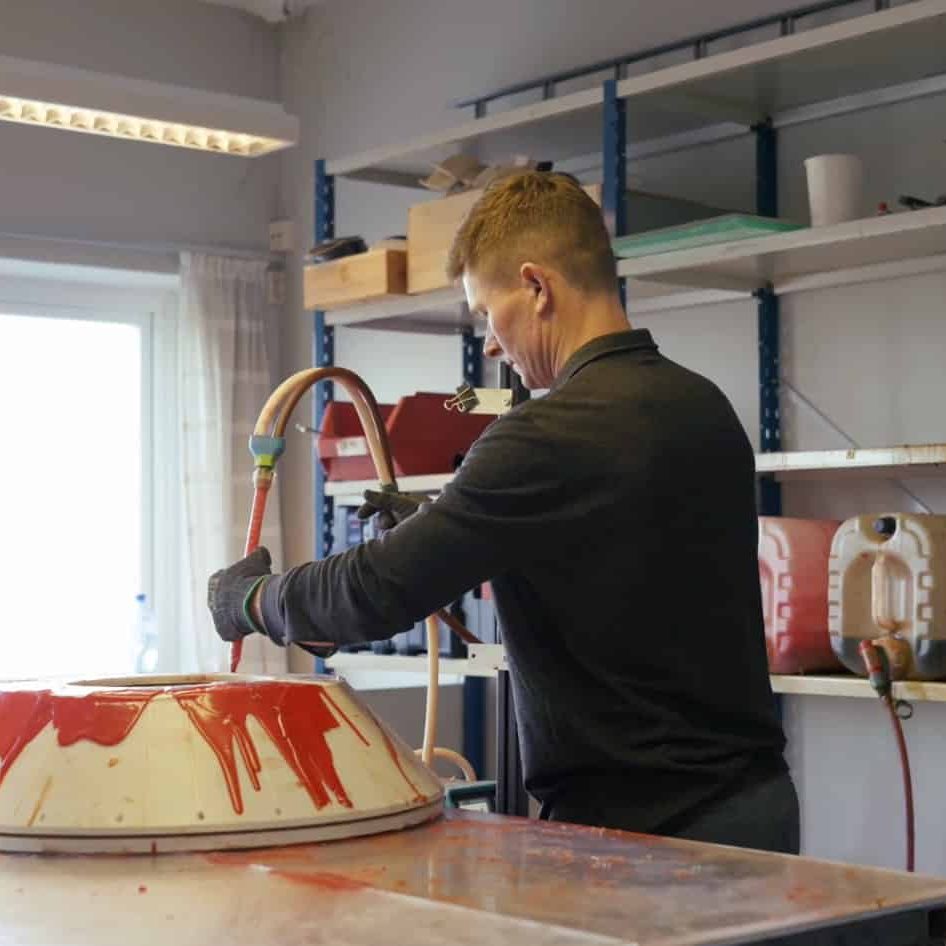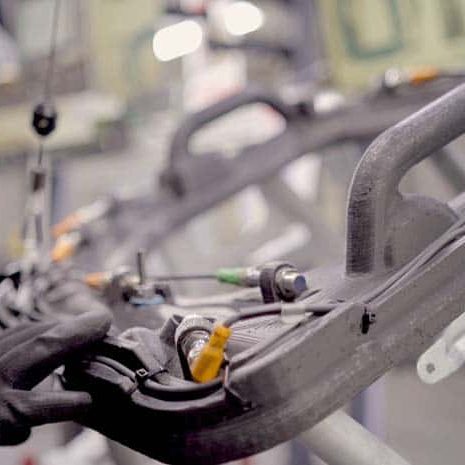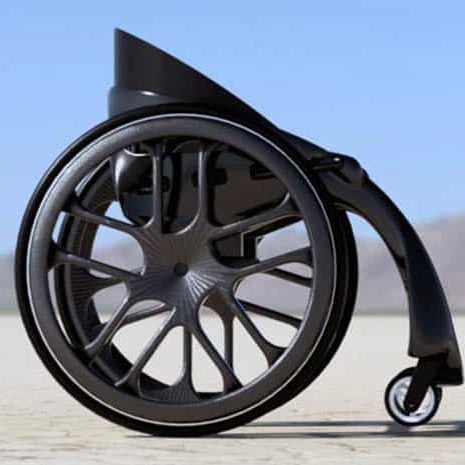
PETG
CHEMICALLY RESISTANT AND EASY TO PRINT
AVAILABLE COLORS
BigRep PETG is a great alternative to BigRep PLA with higher impact strength and heat deflection at a similarly affordable price. With minimal shrinkage, parts printed with BigRep PETG demonstrate minimal warping and reliable results. PETG is easy to print and perfect for design iterations in the prototyping phase of nearly any application. It features well-balanced mechanical properties, making PETG a suitable filament for all-around usage. BigRep PETG is chemically resistant and a great choice for applications where parts are exposed to oils, fuels, alcohols, and weak acids.
Available in several transparent colors, BigRep PETG delivers beautiful results, lending a glossy sheen to the transparent surface. This can be particularly important for certain end-use parts, when visual appearance is paramount.
MADE FOR

Easy to Print for
Wide Range of Uses

High Chemical
Resistance

Good Heat Deflection
Temperature

Minimal Shrinkage
for Part Accuracy

Glossy Transparent
Surface
What is PETG 3D Printing Filament?
PETG is a thermoplastic based on PET (polyethylene terephthalate), which is among the most widely used plastics in the world. PET is known for its strength, chemical resistance, and easy processing, and can be found practically everywhere: it’s used for beverage bottles, food packaging, industrial films, and more. PETG, for its part, shares many properties with PET, only the addition of glycol enhances the material’s durability and printability.
Recognizable by its transparent sheen, BigRep PETG has been optimized for the company’s machines but is compatible on all open-build FFF systems. The material’s excellent strength, toughness, and temperature resistance—not to mention its excellent printability and adhesion—make it a popular alternative to classic filaments like PLA and ABS, as well as a lower cost alternative to engineering-grade materials.
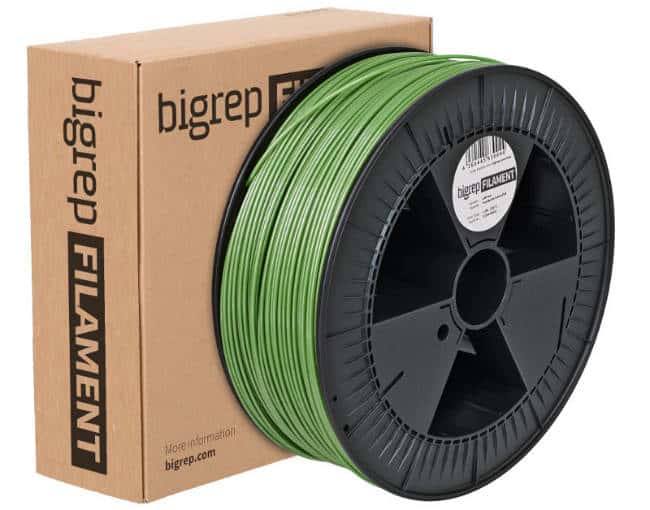
Why Use BigRep PETG Filament?
BigRep PETG’s material properties are a good match for many applications, particularly prototypes, tooling and visual end-use parts. Though it is not as tough as BigRep’s engineering-grade thermoplastics or carbon fiber reinforced materials, PETG does offer enhanced strength, impact resistance, and thermal resistance compared to PLA—all at a comparable price point. This lowers the adoption barrier for the material compared to industrial materials.
In terms of applications, BigRep PETG is popular for creating large-scale design iterations (for prototypes and end-use parts) across many industries thanks to its good quality finish and transparent aesthetics. The material is also a good fit for functional prototypes or end-use parts that require UV resistance and resistance to oils, alcohols, fuels, and weak acids.

PRINTED SIGNAGE
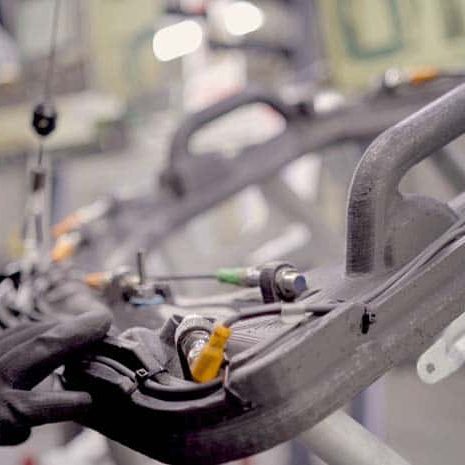
Factory Tooling

CREATIVE DESIGN

Functional Prototypes
Benefits of 3D Printing BigRep PETG
One of the main benefits of PETG filament is that it is painless to print. Compared to other filaments, like ABS, that have a tendency to warp, PETG is largely resistant to shrinkage and warping, and generally displays excellent bed adhesion. The filament can also handle high printing speeds without significantly compromising quality or resolution, and does not require very high printing temperatures.
In fact, BigRep PETG prints best with a nozzle temperature of about 200 °C (BigRep does emphasize that its filament can achieve a smooth flow at temperatures between 190 and 240 °C). The material does not need a heated print bed, but the best results can be achieved with a heated build surface up to 80°C. Another benefit of 3D printing BigRep PETG is that the filament does not generate any odor while printing, unlike ABS and PLA which are known to emit a strong plastic smell when extruded.
Recommended print settings
- Nozzle temperature: 200 - 250 °C
- Print Bed Temperature: >60 °C
- Chamber Temperature: n/a
- Print Speed: 30 - 60 mm/s
Among traditional filaments, BigRep PETG demonstrates good strength and impact resistance. The material has a tensile strength of 50 MPa, which is notably lower than PLA (60 MPa), however its elongation at break is substantially higher at 15% (compared to PLA’s 4%). This means that PETG is more flexible than PLA and can better withstand impacts without breaking.
Where PETG really starts to stand out, particularly compared to PLA, is when it comes to heat resistance. The thermoplastic has a heat deflection temperature (HDT) of up to 70 °C, making it resistant in temperatures up to 10°C higher than PLA. PETG also has a higher glass transition temperature (85°C vs. 60°C), which means it can withstand more heat exposure without starting to soften and melt. In terms of applications, PETG is therefore better suited to outdoor use.
One of PETG’s key selling points is its high resistance to chemicals. Not only is the material able to withstand UV exposure, it also holds up in environments where other chemicals are present, including oils, fuels, alcohols, and even weak acids.
What to Look Out for When 3D Printing BigRep PETG
While PETG’s good adhesion is generally a good thing, it can happen that a print gets stuck to the print bed. This happens most frequently with glass print beds and can be prevented by using a buffer layer between the print bed and the first layers of the part. Kapton tape works well with PETG filament, as well as filament adhesives like Magigoo. Alternatively, the BigRep SWITCHPLATE, a removable and flexible build surface, can facilitate the removal of PETG prints.
When it comes to post-processing, it’s also worth keeping in mind that because PETG is very chemically resistant, it’s not a good candidate for acetone smoothing. Instead, the best quality finishes can be achieved using other post-processing techniques like sanding or epoxy resin coatings. When post-processing PETG prints, it’s always a good idea to wear protective equipment, like gloves, mask, and eyewear.
Best Practices for Storing and Handling BigRep PETG
To get the best results printing PETG filament, it’s not only vital to use the right print settings, it’s also essential to follow proper storage and handling guidelines. Like almost all filaments, spools of PETG should be stored at an ambient temperature and away from moisture and direct sunlight.
PETG is considered “moderately hygroscopic”, which means the plastic absorbs water molecules present in the air. These change the composition of the filament and can lead to inconsistent extrusion and stringing when printed. It’s therefore a good idea to store the filament in a dry box, such as the BigRep SHIELD. It is also possible to dry out the filament before use. BigRep recommends drying PETG at 60 °C for 4 to 6 hours.
Finally, even though PETG filament doesn’t emit a strong odor when 3D printing, you should always print in a well ventilated environment. When operating a multi-printer operation, BigRep recommends installing a local exhaust system.
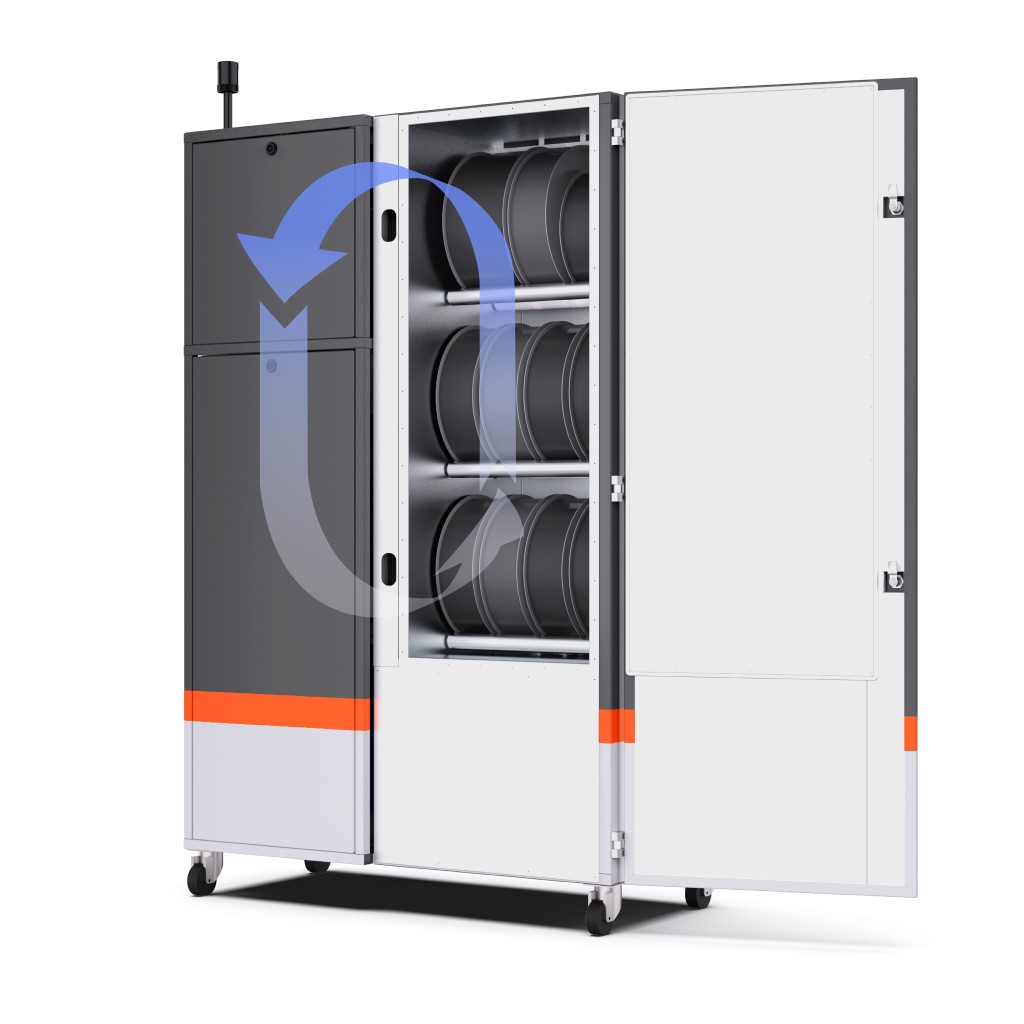
Use Cases: See Applications Using BigRep PETG
BigRep PETG is a versatile filament and can be used to multiple different ends, such as design prototypes, jigs and assembly aids, outdoor products, and end-use parts that require a high aesthetic quality.
One specific application that stands out for BigRep PETG is the GENESIS Eco Screen, an urban architecture project spearheaded by a design team at BigRep. The structure, which stands at four meters, is a fully 3D printed urban biodiversity habitat that was 3D printed using four BigRep ONE printers and a combination of BigRep PETG and BASF’s recycled Innofil3D rPET filament.
The GENESIS Eco Screen’s impressive design was generated based on solar radiation analysis and integrates optimized plant placement based on the environment as well as built-in watering and drainage systems. The large-scale installation also integrates insect habitats to encourage biodiversity in an urban environment. The Eco Screen is a good demonstration of the complex large-scale structures that can be achieved using PETG as well as the transparent, glossy quality of the printed filament.
Physical Properties:
| Material: | Polyethylene Terephthalate, glycol-modified |
| Density: | 1.27 g/cm³ |
| Filament Diameter: | 2.85 mm |
| Color Availability: | Transparent, Translucent Purple, Green |
| Available Spool Sizes: | 2.3, 4.0 and 8.0 kg |
Mechanical Properties:
| Tensile Strength (ISO 527): | 50 MPa |
| Tensile Modulus (ISO 527): | 1900 MPa |
| Elongation at Break (ISO 527): | 15% |
| Flexural Strength (ISO 178): | 70 MPa |
| Flexural Modulus (ISO 178): | 2100 MPa |
| Charpy Unnotched Impact Strength (ISO 179): | 22 kJ/m² |
| Charpy Notched Impact Strength (ISO 179): | 7.2 kJ/m² |
Thermal Properties:
| HDT B - 0.45 MPa (ISO 75): | 70°C |
| HDT A - 1.8 MPa (ISO 75): | 63°C |
| Vicat Softening Temperature (ISO 306): | 78 °C |
| Glass Transition Temperature (Tg) (DSC): | 85°C |
| Continuous Use Temp. (UL Yellow Card) (DSC): | 50°C |
Recommended printing conditions:
| Nozzle Temperature: | 200 - 250°C |
| Print Bed Temperature: | >60°C |
| Fan Speed | 0 - 50% |
| Surface Adhesion | Kapton, BigRep SWITCHPLATE |
| Support | Breakaway |




















